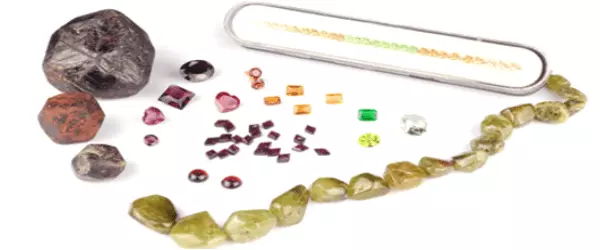Garnets have an interesting history found to date back to the Bronze Age. It was a common medium for the earliest lapidary and glyptic arts. Garnet was believed to be a powerful talisman, a protective gem carried by the earliest travellers. In ancient Egypt, every tomb of status included garnet jewellery to ease the owner’s passage into the afterlife.
During the Middle Ages red garnet was associated with members of the royal court and European knights would wear garnet jewellery under their armour for protection. In countries like Japan and China, the garnet was used to make bullets that were believed could inflict more damage on an intended victim. Red garnets were especially enjoyed in the Victorian period where smaller stones were set close to one another to create intricate and beautiful designs.
Although a majority of garnets come in red (leading to the erroneous belief that all garnets are red) the Garnet group is actually much larger than most people realize and Garnets come in every colour! As a gemstone, garnets have had a mixed reputation. Red garnet's relative abundance and widespread use has contributed to a lower price than other gems in its league, but the more rare Tsavorite (green), Mandarin (orange) and Blue (change of colour) garnets are amongst the most valuable and fashionable gem materials and can be found in the latest high jewellery collections around the globe. The most expensive blue Garnet, of just over 4cts, sold for $6.8 million in 2003.
Apart from its varied use in jewellery, garnet has myriad industrial uses because it is non toxic and environmentally friendly. Its hardness and durability lead garnet sand to be used in a wide range of industrial abrasive products like sand paper.
Unlike nearly every other gem material, Garnet is also one of the few gems can be considered truly natural – it is not commonly treated in any way – making even affordable specimens uniquely ‘all-natural’. Despite their frequent use in industry, Garnets are not often made in laboratories either, thanks to their relative abundance.
Despite the profusion of garnets available today, this beautiful and varied gem material remains a popular choice for collectors with an interest in its long history, eye for its beauty and desire for its durability and affordability.

Tanja M. Sadow G.J.G.
Dean and founder of the Jewellery Design and Management International School
